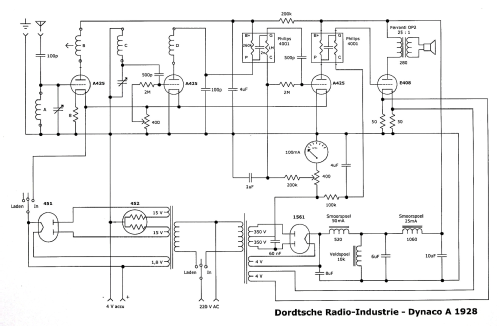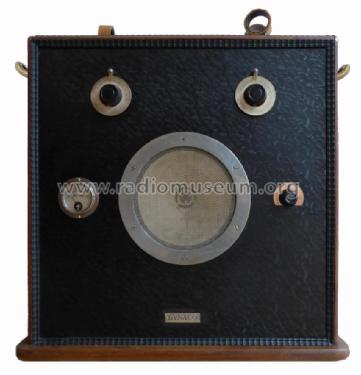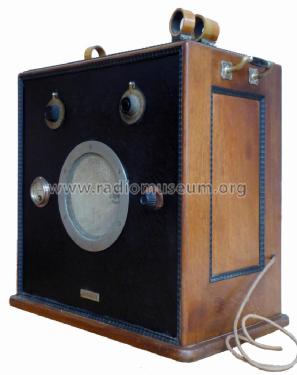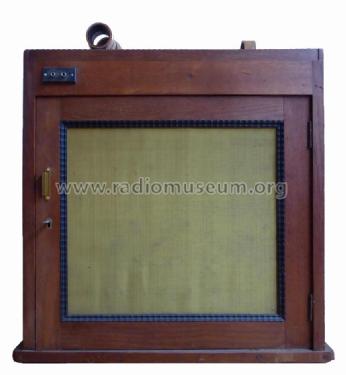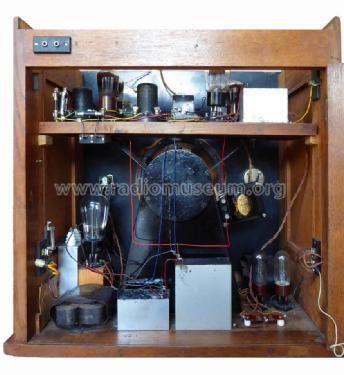- Pays
- Pays-Bas
- Fabricant / Marque
- Dynaco, Dordtsche Radio Ind., Dordrecht
- Année
- 1928
- Catégorie
- Radio - ou tuner d'après la guerre 1939-45
- Radiomuseum.org ID
- 69395
Cliquez sur la vignette du schéma pour le demander en tant que document gratuit.
- No. de tubes
- 4
- Principe général
- Récepteur TRF - par réaction (régénératif); 2 Etage(s) BF
- Circuits accordés
- 2 Circuits MA (AM)
- Gammes d'ondes
- PO et GO
- Tension / type courant
- Secteur et accus rechargeables (eventuellement piles) / 220 & 4 Volt
- Haut-parleur
- HP dynamique à électro-aimant (électrodynamique) / Ø 20 cm = 7.9 inch
- Puissance de sortie
- 3 W (qualité inconnue)
- Matière
- Boitier en bois
- De Radiomuseum.org
- Modèle: A - Dynaco, Dordtsche Radio Ind.,
- Forme
- Modèle de table boitier avec vouvercle
- Dimensions (LHP)
- 580 x 560 x 345 mm / 22.8 x 22 x 13.6 inch
- Remarques
-
Dynaco model A is an AC TRF receiver with accumulator for the filament of the radio tubes.
In Slavonic oak cabinet with black front, black decorative edges and a hinged door at the rear. Four coils can be inserted at the top of the receiver. The feedback is set by means of a movable coil. At the top of the front are the tuning knobs for primary and secondary tuning, the electrodynamic loudspeaker is in the middle with on the left a milliamp meter that shows the anode current of the power tube. A switch with the positions "on", "off" and "load" is located to the right of the loudspeaker. At the rear is a gramophone connection. Because of the very high weight (over 47 kg), carrying handles are provided on the sides of the cabinet.
The radio was intended for larger spaces, such as cafes, restaurants or dance halls. The radio has a built-in battery charger, which can be used to charge the 4-volt accumulator for the filament current of the three radio tubes when the radio is not in use. The built-in power supply unit provides the plate and filament voltages for the rectifier and the power tube. Both the radio and the electrodynamic loudspeaker were designed by drs M. Hellingman, teacher at M.T.S Technical School in Dordrecht. The radio receives medium wave and long wave, depending on the coils used. The receiver was introduced on August 20, 1928, when the first advertisements appeared and the radio was demonstrated in the auditorium at Groenmarkt 50, Dordrecht. A month later it was demonstrated in the coffee room of the Dordrecht flower exhibition.
- Poids net
- 47 kg / 103 lb 8.4 oz (103.524 lb)
- Prix de mise sur le marché
- 650.00 Hfl
- Source extérieure
- Radio Amateur Museum / Frans J.J. Driesens + ISBN 90-76014-04-3.
- Littérature
- Radio-Expres, Netherlands
- D'autres Modèles
-
Vous pourrez trouver sous ce lien 2 modèles d'appareils, 2 avec des images et 1 avec des schémas.
Tous les appareils de Dynaco, Dordtsche Radio Ind., Dordrecht
